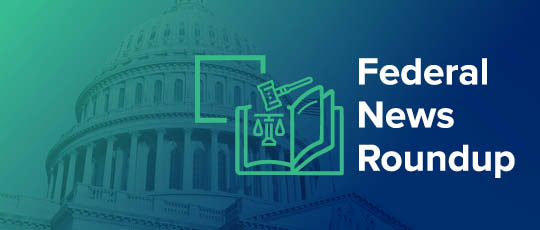For WorldatWork Members
- Employers Ready to Shuffle Health, Well-being Partners, Workspan Magazine article
- Utilizing Benefits to Strategically Foster Employee Engagement, Workspan Magazine article
- Strategic Benefits: How Employee Benefits Can Create a Sustainable Competitive Edge, Journal of Total Rewards article
For Everyone
- Do HSAs and FSAs Actually Save Employees Money? Workspan Daily article
- Certified Benefits Professional, certification
- Health and Welfare Plans: Plan Types and Administration, course
Although dental coverage is a popular benefit in many strategically minded total rewards (TR) packages, it’s a safe bet most TR professionals have not given much thought to dental loss ratios (DLRs). But now may be an excellent time to do so.
A DLR is the portion of dental insurance premiums spent on patient care rather than overhead, according to Brett H. Kessler, D.D.S., the president of the American Dental Association (ADA). The concept is similar to the medical loss ratios (MLRs) required of health plans by the Affordable Care Act (ACA). The DLR “is used to set the minimum percentage of insurers’ revenue that must be spent on actual dental care,” Kessler said.
DLRs are in the news these days because many states are considering, or actively enacting, legislation relating to reporting DLRs or setting required minimums. Insurance companies experienced lower claims (and, therefore, a higher loss ratio) during the pandemic, when people were skipping dental visits due to lockdowns, said Tammy McCormack, the chief human resources officer at Century Traffic in Pewaukee, Wis. “As patients return to biannual dental visits, these ratios may shift, and this is becoming a topic of discussion,” she said.
This article explains what’s happening with DLRs at the state level, why it matters to employers and employees with dental insurance, and what employers should do in response.
State-Level DLR Initiatives
In 2022, Massachusetts became the first state to pass a required minimum DLR. The law requires dental plan insurers to spend at least 83% of premiums on patient expenses; insurers that fail to meet this benchmark must issue partial refunds to insureds individuals. New Mexico requires a minimum 65% DLR and Nevada 75%. (For comparison, the ACA requires an 80% to 85% MLR for health plans.)
Other states have instituted DLR reporting and remediation requirements rather than fixed minimum DLRs. These include:
- Arizona. As of 2024, the state requires annual reporting of DLRs for the prior calendar year.
- California. As of Jan. 1, 2025, state law requires dental plans to annually report the loss ratio for their plan contracts, along with (among other things) the total earned premiums and total incurred claims in each plan contract form.
- Colorado. Starting in 2024, the state requires dental plans to file DLR forms with the division of insurance for the preceding calendar year. Once the state insurance division has collected DLR information for two years, the commissioner is required to identify carriers that significantly deviate from the average DLR and investigate the causes.
- Louisiana. The Louisiana Dental Loss Ratios for Dental Healthcare Services Plans Act, effective Jan. 1, 2025, requires all dental plans to file an annual DLR report for the preceding calendar year with the state insurance commissioner.
- Maine. Passed in 2022, the state’s DLR law establishes mandatory DLR reporting. The law contains a provision for calculating outliers — plans with lower-than-average DLRs — and empowers the state to order remedial measures, if warranted.
- Rhode Island. The state requires mandatory DLR reporting starting in mid-2025. The law also requires the insurance commissioner to conduct research and develop recommendations relating to a mandatory minimum DLR by Jan. 1, 2028.
- Virginia. Starting in April 2025, dental carriers are required to file annual DLR reports for the previous year with the state insurance commission.
- Washington. The state has required annual DLR reporting since 2015.
Potential Impacts for Employers and Employees
According to Kessler, DLRs drive better patient care in several ways:
- They require dental insurance companies to pay a set percentage of premiums collected on patient care.
- They encourage insurers to invest more of patients’ premium dollars into the types of care they need.
- They require insurance companies to be more transparent in their reporting of how much they spend on patient care.
“Employers that want to find the best dental plans for their employees will benefit from the transparency of plans offered in their state if insurers are required to publicize the dental loss ratio calculations of their plans,” Kessler said. “Plans with low DLRs likely offer limited coverage of dental benefits, and employees would end up paying out of pocket for any dental work, making the insurance pretty worthless as a benefit.”
However, an issue brief from the National Association of Dental Plans (NADP) stated that “Congress intentionally omitted dental benefits from the Affordable Care Act’s loss ratio provisions because MLRs do not capture or communicate the value of low-premium insurance products like dental plans.” Many administrative costs are fixed, according to the NADP, so a dental plan with a $35 monthly premium cannot achieve the same loss ratio as a health plan with a $700 monthly premium.
The only two ways to achieve a higher DLR with a low-premium dental plan, the NADP said, are to reduce administrative costs or increase payments to providers — and the latter would “[drive] up premiums and cost-sharing for consumers.”
Additionally, according to the NADP’s statement, Massachusetts has had eight dental insurers exit the marketplace since the passage of the state law, “resulting in disruptions in care and less consumer choice.” (Massachusetts, notably, has the highest required DLR of any state to date.) Particularly in a market with few dental plan options, losing one or more carriers could result in higher costs for employers and their employees who are insured.
NCOIL Recommendation
In an effort to bridge the gap, the National Council of Insurance Legislators (NCOIL) created a Medical Loss Ratios for Dental (DLR) Health Care Services Plans Model Act. Similar to many of the state laws already in effect, the model law would require DLR reporting and authorize remedial measures for outlier plans. Under the model law, outliers could be ordered to issue rebates, and carriers that are outliers for two years running could be subject to a minimum DLR percentage.
NCOIL’s model law has been endorsed by the ADA, and the NADP’s brief calls it an improvement over the “rash approach” taken by Massachusetts. It is, however, a model only and states are not bound to follow NCOIL’s template or recommendations.
What Employers Should Be Doing Now
With pending and current DLR legislation increasing around the country, employers that offer dental plans should stay in close contact with their plan providers, insurance brokers and state insurance commissioners. This is particularly important for employers that operate in multiple states. The American Association of Endodontists offers a state-by-state tracking map of pending dental legislation, including DLR-related initiatives.
Michael Adelberg, the executive director of the NADP, said, “employers should be monitoring the situation, talking to their brokers and opposing an arbitrarily selected MLR number” for their dental plans.
Editor’s Note: Additional Content
For more information and resources related to this article, see the pages below, which offer quick access to all WorldatWork content on these topics:







